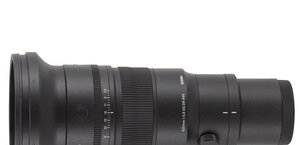Sigma C 18-300 mm f/3.5-6.3 DC MACRO OS HSM
5. Chromatic and spherical aberration
The older and faster Nikkor 18-300 mm VR fared badly when it comes to the longitudinal chromatic aberration correction. The newer model of that lens managed that task much better. The performance of the Sigma is closer to that better Nikkor because there are no serious longitudinal chromatic aberration problems. Of course you can notice a slight cast of defocused images but, fortunately, the effect is not especially bothersome.
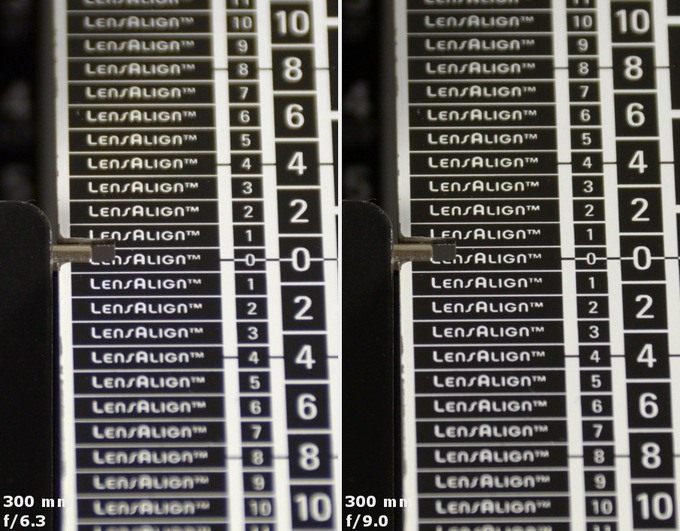 |
Please Support UsIf you enjoy our reviews and articles, and you want us to continue our work please, support our website by donating through PayPal. The funds are going to be used for paying our editorial team, renting servers, and equipping our testing studio; only that way we will be able to continue providing you interesting content for free. |
- - - - - - - - - - - - - - - - - - - - - - - - - - - - - - - - - - - - - - - - - - - - - - - -
None of the megazooms, tested by us, managed to correct the lateral chromatic aberration in a good way. The more expensive Nikkor 18-300 mm VR fared badly here because in a wide range of apertures and 50-100 mm focal lengths its results were about 0.22%. The same high value was observed in the case of the newer Nikkor but only at the difficult combination of 300 mm and the maximum relative aperture. The Tamron 16-300 mm also didn’t exactly distinguish itself – its performance at the maximum focal length was bad and the results went as high as 0.27%.
Let’s check how the Sigma compares here.
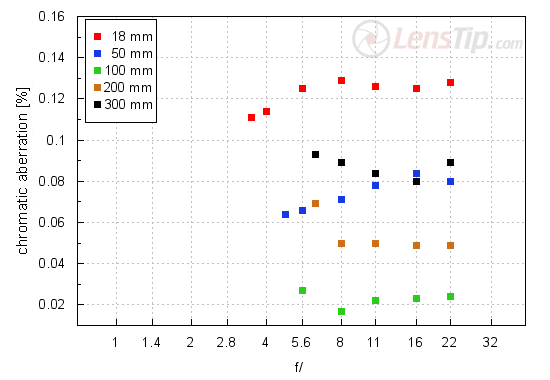
You can say immediately a high number of low-dispersion elements makes itself felt because the Sigma fares better than its rivals. The highest level of chromatic aberration can be seen at 18 mm and the results range from 0.11 to 0.13%. It is still a medium level but very near the borderline with high. Fortunately it is still much better than the level of its competitors which maximum results were about two times higher.
In the case of other focal lengths the aberration of the Sigma 18-300 mm shouldn’t bother you at all. At 50 and 300 mm it remains moderate and in the 100-200 mm range it is becoming low.
In this category the Sigma definitely deserves our praise; as its rivals learned to their costs, the chromatic aberration correction in this type of megazoom lenses is very difficult indeed.
| D7000, RAW, 18 mm, f/8.0 | D7000, RAW, 100 mm, f/8.0 |
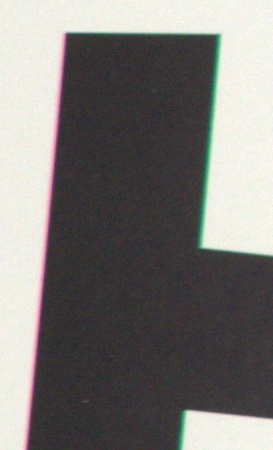 |
 |
Spherical aberration
The tested lens didn’t have any ‘focus shift’ effect so this type of aberration cannot be very distinct. The images of light circles in front of and behind the focus shown below also prove that spherical aberration is corrected in a proper way. There are no significant differences between them which assures us that the Sigma 18-300 mm doesn’t have any noticeable problems with that type of aberration.
| Nikon D7000, 100 mm, f/5.6, in front of | Nikon D7000, 100 mm, f/5.6, behind |
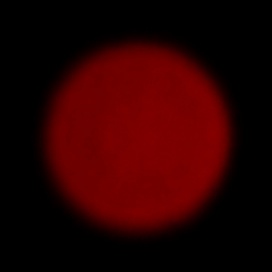
|
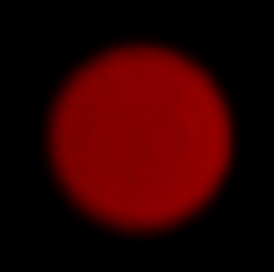
|




